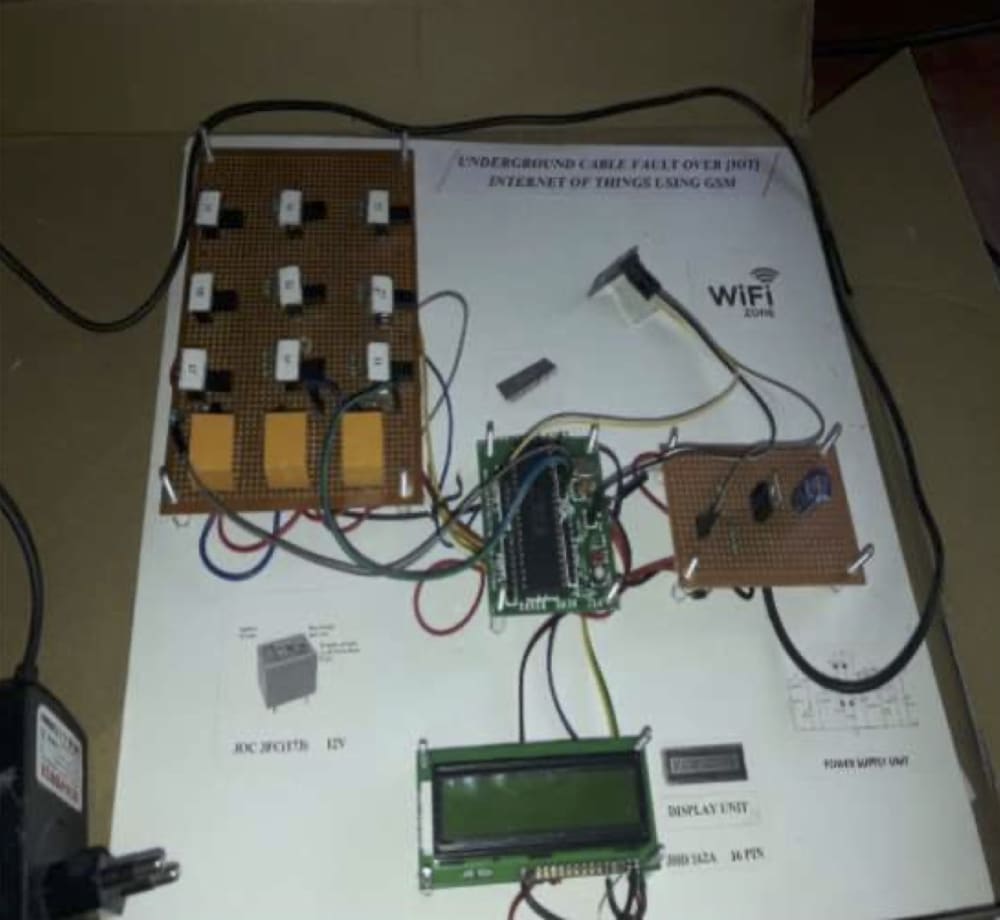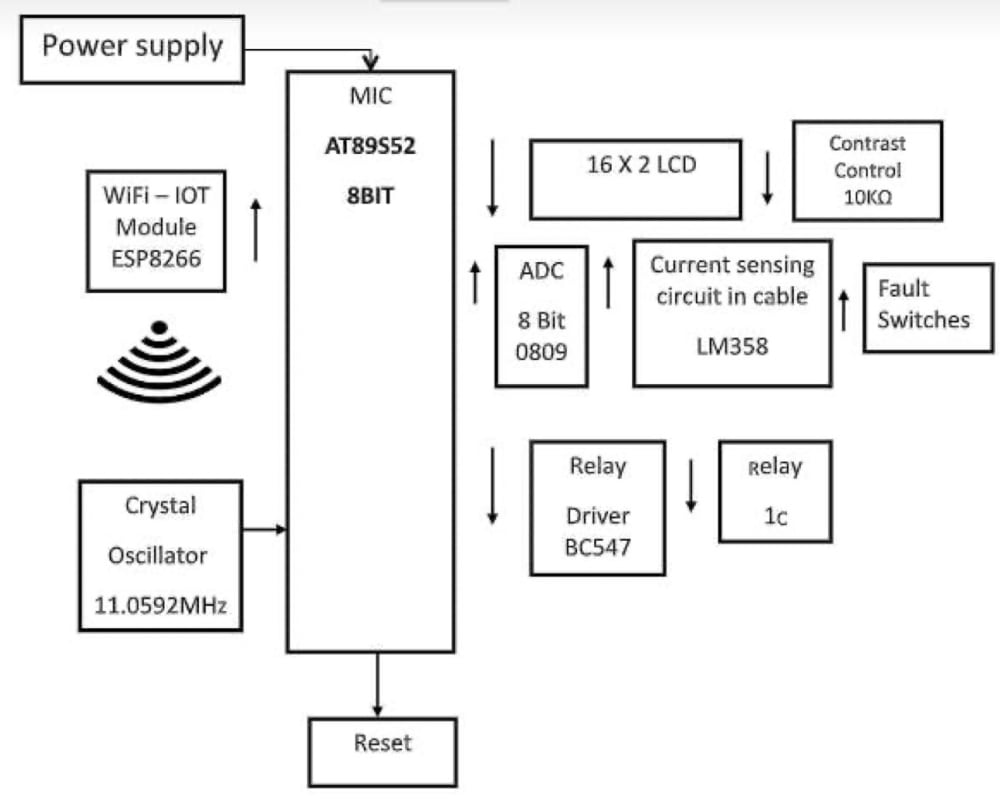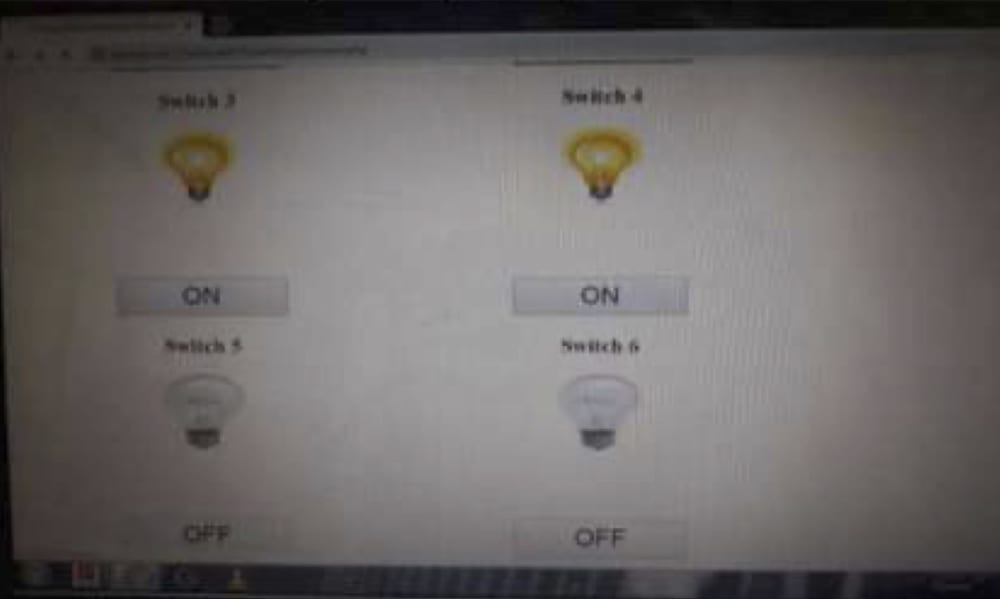PROJECT OVERVIEW:
The reliability and efficiency of power distribution networks can be increased in a unique way by employing the Internet of Things (IoT) to identify defects in subterranean cables. This system's sensors are arranged so they can continuously monitor important parameters like temperature, voltage, current, and insulating resistance. Then, using real-time data analysis and machine learning algorithms, anomalies and potential cable failures are discovered. Remote monitoring enables operators to respond to these issues promptly, while automated solutions minimise downtime and identify faults. Furthermore, predictive analytics based on past data informs maintenance schedules, and interaction with Geographic Information Systems (GIS) facilitates fault location visualisation. To sum up, IoT-driven subsurface cable fault detection offers a dependable, cost-effective, and proactive method of sustaining.
TECHNIQUES OF FAULT LOCATION:
"Underground Cable Fault Detection Over IoT (Internet of Things) Using GSM." These methods formerly relied on temporal-domain and acoustic reflectometry, both of which had limitations. The Internet of Things (IoT), which enables real-time data collection and remote access, has transformed infrastructure monitoring. This could lead to less downtime and better predictive maintenance. GSM technology integration allows for quick fault notifications and swift action, which further enhances real-time communication. Recent research has focused on integrating IoT sensors with GSM communication to construct full systems and overcome the limitations of traditional techniques. This has made it possible to locate defects precisely.
TYPES OF CABLES:
- Power cables: must be robust and well- insulated.
- Communication Cables: Use Ethernet cables, fiber optic cables, or wireless protocols like sensor: Lora WAN or ZigBee to transfer data from sensors to a central control unit. These include vibration, temperature, and current sensors that identify abnormalities and cable failures
- GSM/GPRS Modems: Use the GSM network to send data to a distant monitoring station by establishing a cellular connection.
IMPLEMENTATION:
System design and planning, the installation of IoT sensors along underground cables, the configuration of GSM communication modules for dependable network connectivity, the setup of a central control unit for data processing and analysis, the development of data analysis algorithms and fault detection rules, fault localization, remote control and automation, user interface development for real-time monitoring and reporting, regular maintenance, testing, and validation, personnel training, and compliance with industry regulations are all crucial steps in the implementation of an underground cable fault detection system over the Internet of Things (IoT) using GSM. By using a thorough approach, the system is guaranteed to be able to precisely locate faults, identify cable failures, and respond to minimize interruptions, hence improving the safety and dependability of subterranean power distribution networks.
RESULT:
IoT-driven underground cable fault detection provides accurate fault identification through advanced analytics and accurate, real-time monitoring. By enabling quick fault isolation and predictive maintenance scheduling, this technology lowers downtime and costs while ultimately improving network reliability. Additionally, it improves safety by allowing quick fault location identification during maintenance.
Like this entry?
-
About the Entrant
- Name:Vigneshwar V G
- Type of entry:teamTeam members:
- SARANRAJ J
- SHAILESH BABU K R
- Patent status:none









